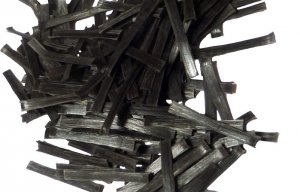
Sumitomo Bakelite signs partnership with GRIP Metal
Further benefit of micron-sized thermo-responsive quartz, silicon oxide and titanium oxide particles.

9th September 2021
Innovation in Textiles
|
Pacific Palisades, California
Celliant, infrared responsive technology from materials science Hologenix, has completed its 9th peer-reviewed published study.
Already clinically shown to increase tissue oxygen levels in the body for stronger athletic performance, faster recovery and better sleep, and to help with pain reduction and inflammation, Celliant is shown in this latest study to increase grip strength when used in armbands on people with chronic wrist or elbow pain caused by carpal tunnel syndrome, epicondylitis (commonly known as tennis elbow, golfer’s elbow or baseball elbow) or arthritis.
The study was a randomised double-blind placebo-controlled trial containing 68 people. It has been published in the Research Journal of Textile and Apparel.
The 68 subjects, both males and females aged 21 or older, had a six-month history of chronic wrist or elbow pain. They were tasked with wearing an armband (35 with real Celliant and 33 with the placebo fabric) on the affected wrist or elbow for at least 12 hours per day for 14 days. Grip strength was measured by a dynamometer before and after the two-week study.
Celliant technology is a patented process for adding micron-sized thermo-responsive quartz, silicon oxide and titanium oxide particles to fibres, in this case PET. The resulting Celliant yarns were woven into armbands containing either 42% Celliant PET (active) or zero Celliant PET (placebo). They were produced using a seamless construction with either type of yarn.
The Celliant yarns absorb body heat and re-emit the energy back to the body as infrared radiation, which is non-invasive. In this study they were found to be effective in increasing grip strength.
The mean grip strength percentage increased over two weeks by 7.8% for the placebo group and 16.8% for the Celliant group. No adverse effects were observed.
“Celliant armbands appear to be effective in painful upper limb inflammatory disorders, and further studies are warranted,” the report states.
The study also concludes that Celliant armbands are easy to wear, cost-effective and have not been shown to produce any adverse effects, so there should not be any barrier to widespread use. It also suggests that while other types of textile technology might be used to produce IR-emitting fabrics, the most efficient way to produce such fabrics is most likely by incorporating ceramic particles into the polymer fibers from which the fabric is woven, as with Celliant technology.
The protocol for the study was approved by the IRB of Southern California Institute for Research and Education and registered at clinicaltrials.gov.

Business intelligence for the fibre, textiles and apparel industries: technologies, innovations, markets, investments, trade policy, sourcing, strategy...
Find out more